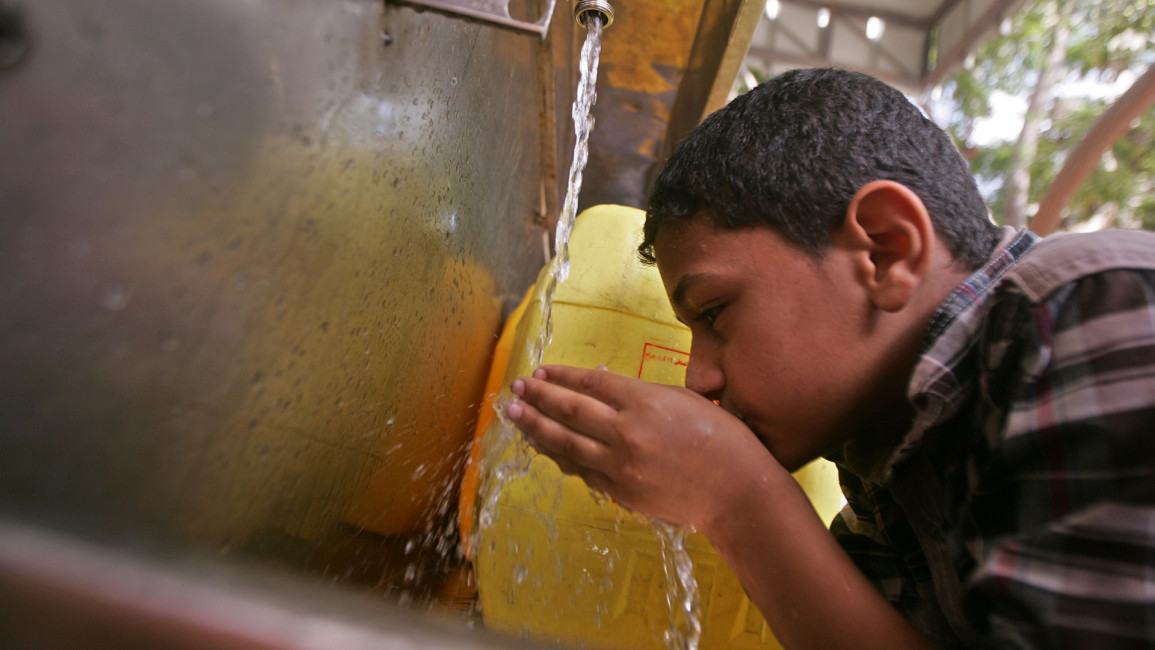Palestinians surviving on 3% of minimum daily water needs in Gaza
Some Palestinians in the Gaza Strip are surviving on just three percent of the global minimum standard for daily water usage, two humanitarian groups have said, as Israel’s war has decimated the enclave’s water infrastructure.
A lack of clean water and sanitation facilities have led to an increase in diseases and infections among Gaza’s civilian population, particularly children, according to the International Rescue Committee (IRC) and Medical Aid for Palestinians (MAP).
The two organisations said in a report on Tuesday that they were alarmed at the situation after recent trips to the besieged Gaza Strip, which has been under a brutal Israeli offensive since 7 October.
The report adds that field observations by experts from IRC and MAP in Gaza are struggling to find safe and clean water, and that "at least one major hospital struggling to keep sufficient water supplies to meet its needs".
The experts do not specify which hospital, however, Israel's bombardment of the Strip has fully destroyed or damaged the majority of the enclave's hospitals and medical facilities, rendering them no longer functional.
A deterioration of water, sanitation and hygiene conditions "have significantly increased acute watery diarrhoea among children under five, while other water-borne and communicable diseases such as Hepatitis are proliferating among families who cannot access sources of clean water," the report found.
Families have been forced to build their own toilets, with hundreds of people using a single one, amounting to 30 times more than the minimum global standard, IRC and MAP said.
The obstruction of essential aid, hygiene products and medical supplies as well other humanitarian assistance could take months to reach the coastal strip, which has also hindered the situation.
Israeli authorities often block aid convoys from reaching Gaza and Israeli settlers have also attacked several convoys. The main border crossing which was used to facilitate aid in the enclave’s southern city of Rafah was overrun by Israeli forces earlier in May.
The lack of waste management and the pileup of rubbish in the Gaza Strip as a result of heavy Israeli bombardment has contributed to the contaminating of water sources, causing disease to spread further.
Experts at the NGOs also found that access to Gaza's Sofa landfill has been blocked, further deteriorating sanitary conditions.
A BBC satellite analysis from earlier this month found that more than half of Gaza's water treatment plants and sewage system have been damaged or destroyed by Israel’s heavy aerial and ground bombardment.
For months, families have been forced to spend hours queuing up with plastic bottles and gallons at water tanks, and then make efforts to ration supplies.
More than 35,000 people have been killed in Gaza since 7 October, mostly women and children, the territory’s health authorities say. Thousands of more bodies are believed to be trapped beneath the rubble.
A looming Israeli assault on the city of Rafah which borders Egypt would further exacerbate an already catastrophic humanitarian crisis. At least 800,000 people have been displaced from the city – some numerous times already.


![Minnesota Tim Walz is working to court Muslim voters. [Getty]](/sites/default/files/styles/image_684x385/public/2169747529.jpeg?h=a5f2f23a&itok=b63Wif2V)




![Debris near Rafic Hariri International Airport [Getty]](/sites/default/files/styles/image_330x185/public/2176162423.jpeg?h=a5f2f23a&itok=MCSK9mkM)
![An Israeli air strike on Jabalia killed teenage journalist Hassan Hamad [Screengrab/X]](/sites/default/files/styles/image_330x185/public/2024-10/hassan%20hamad1.jpg?h=c12e0b96&itok=Rd_dyCVp)
